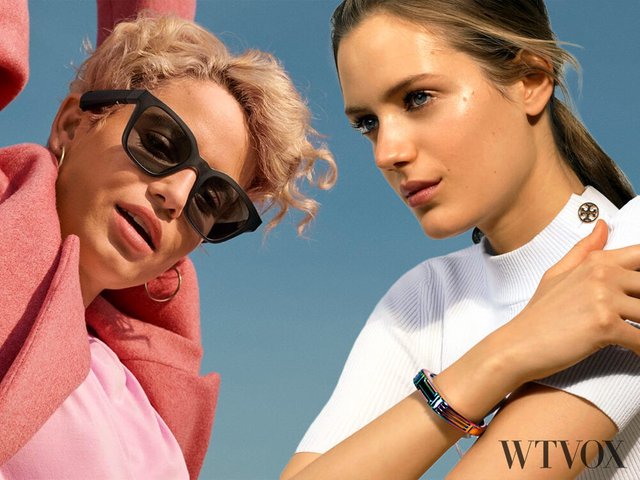
This article discovers some of the best and most controversial wearable tech gadgets, from 2014 until now.
1. Bose Frames Alto
The device has embedded miniature speakers that are directing sound towards you and away from everyone else.
It works by creating a sort of ‘bubble of sound' that only you'll be able to hear.
Also, because there's nothing covering your ears, you'll be (or appear to be) more engaged in the world around you.
The frames are of great quality, designed for everyday wear.
Scratch-resistant, with durable metal hinges, the frames can handle the odd splash of water too.
The lenses are excellent as well, able to block UVA/UBA rays.
Finally, to unlock all features this wearable tech gadget has to offer, you have to connect ut with the Bose Connect app.
The app allows you to customise your settings; there's no need to reach for your phone when listening - one button does it all.
You can control your music, pick up calls, and trigger your voice assistant, all with a simple tap.
2. JawBone Up Smart Band
When launched, Jawbone Up was at the apex of fitness trackers.
Alongside Nike+ FuelBand range, and Fitbit Flex, Jawbone Up heralded the start of the smart fitness era.
Jawbone Up revolutionised the quantification and visualisation of movement and rest.
It provided insightful and accessible reporting that helped people move and check their goals.
It was without wires, untethered, stylish and comfortable.
But, while hardware companies and the public demanded improved wearable tech gadgets, Jawbone failed to deliver.
The company ceased production in 2016 and sold its remaining inventory to a third-party reseller.
As of the summer of 2018, the future functionality of the app and support of existing devices is uncertain.
But, Jawbone's design is still more appealing than many modern-day trackers.
3. Google Glass
Google Glass remains the most talked-about wearable tech gadget in the world.
While the look was a complete failure, the device was a perfect example of wearable innovation and smart technology.
Google Glass was able to display visual information in a smartphone-like (but hands-free) format.
The wearers were able to browse on the Internet via natural language voice commands.
It had a small LCD screen in front of your eyes and was controlled by both voice and touch - on the frame.
The device allowed you to make calls, surf the Internet, record and share what you see.
Now, when launched, the device was rejected as ugly, intrusive and even dangerous at times.
But now, with the advent of augmented reality and voice bots, Google Glass will make a beautiful return.
4. Talsam Smart Jewellery
Talsam comes in the form of necklace and bracelet combo.
The smart jewellery can be charged with ease thanks to a USB-C connector hidden inside the luxurious casing.
Talsam connects with your smartphone via a Bluetooth chipset.
The device lets you send and receive 'emotional expressions' via a special app installed on your smartphone.
The pendant or bracelet informs you each time an animated emoji has arrived, by lighting up according to the emotion received.
5. Lechal GPS Shoes
Google maps offer the best support to die-heart trekkers like me.
But, I hate having to walk unknown territory with my eyes glued to the smartphone's screen.
The Bluetooth-connected shoes is called Lechal, it means "take me along" in Hindi, using haptic feedback.
The shoes connect to an app on your phone to get the GPS location.
It then, instructs you to which side to turn by sending a mild vibration to the right or the left shoe.
The app also functions as a fitness tracker and lets you check your metrics with ease.
6. Tory Burch For Fitbit
Similar to the Double-Wrap bracelet, this was the result of an exclusive collaboration between Tory Burch and Fitbit.
The bracelet allowed you to transform your Fitbit Flex 2 tracker into a super-chic accessory.
The smooth metallic casing is lightweight, versatile and effortlessly tomboy.
A polished style for work or weekend, day or evening, to and from the gym.
7. Volvorii Timeless Shoes
Volvorii Timeless Shoes was initially promoted as "the world's most elegant evolution in fashion tech".
But these MIT inspired shoes never made the cut.
The team behind this idea launched an Indigo campaign that has never reached completion.
The ultra-hi-tech electronic ink stiletto changes colour and patterns via a dedicated smartphone app.
Moreover, it provides endless possibilities to match with any outfit and style you want.
8. Motiv Ring
The Motiv Ring is another wearable tech gadget that I like and use a lot.
It tracks the heart rate, sleep and fitness activity in a waterproof, titanium form factor.
Thanks to the ring's three-day battery life and on-board memory, You can ditch your smartphone when fishing or snowboarding with friends.
The Motiv ring keeps providing you with excellent metrics and maximum comfort, 24 hours a day, seven days a week.
9. Thync Headset
Thync is one of the best devices for synchronising my brain before I start to meditate.
The device emits vibrations that can be felt in the bones of my head.
The vibrations are in fact electronic or ultrasonic waveforms that signal neural pathways in the brain.
When these specific pathways are stimulated, a shift in my state of mind and energy level is triggered.
10. Cicret Smart Bracelet
Cicret was one of the most controversial wearables tech gadgets of 2015.
For once, just like with the digital ink shoes, the project never materialised.
The Cicret bracelet has a small Pico projector that projects a screen on my forearm.
Now, there are all sorts of projectors that can do that.
However, this screen is interactive not just for display.
For example, you can use the image just like a touch screen.